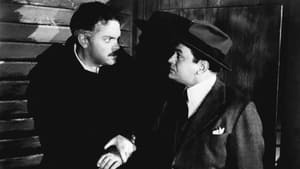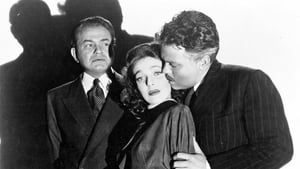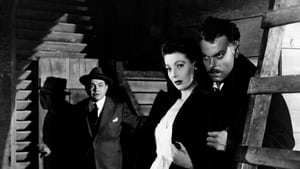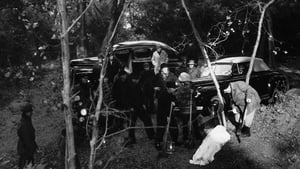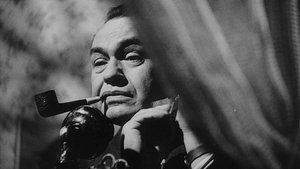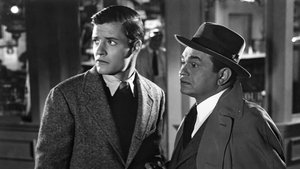Video Sources 0 Views
- Watch trailer
- The Stranger 1946 Colorized

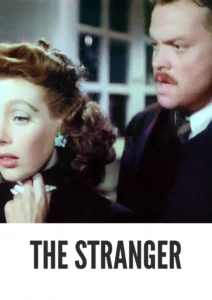
Synopsis
Table of Contents
Toggle
Enter the shadowy world of post-war America with The Stranger, a gripping film noir from 1946, now colorized to amplify its haunting beauty and suspense. Directed by and starring the legendary Orson Welles, this cinematic masterpiece weaves a tale of deception, paranoia, and hidden identities in a seemingly idyllic small town. Perfect for enthusiasts of classic thrillers and those captivated by Welles’s directorial genius, this HD download offers a fresh perspective on a timeless story of good versus evil. The movie was also released under the titles Temptation in the UK and The Needles Always Point North
The Stranger unfolds in the aftermath of World War II, as Nazi hunter Mr. Wilson (Edward G. Robinson) tracks escaped Nazi Franz Kindler (Orson Welles) to a quiet Connecticut town. Kindler has assumed the identity of Charles Rankin, a charming professor who has married Mary Longstreet (Loretta Young), the daughter of a Supreme Court Justice.As Wilson investigates, he becomes increasingly convinced that Rankin is, in fact, the notorious war criminal he seeks. However, proving it becomes a dangerous game of cat and mouse, as Kindler is a master of disguise and manipulation. Mary, blissfully unaware of her husband’s true identity, becomes caught in the middle of the escalating conflict. The film delves into themes of trust, betrayal, and the insidious nature of evil, building to a dramatic climax that tests the limits of morality and justice. The Stranger is a chilling exploration of hidden identities and the darkness that can lurk beneath a façade of normalcy.
The Stranger features a stellar cast, each delivering powerful performances that enhance the film’s tension and drama:
- Orson Welles as Franz Kindler/Charles Rankin
- Edward G. Robinson as Mr. Wilson
- Loretta Young as Mary Longstreet Rankin
- Philip Merivale as Judge Longstreet
- Richard Long as Noah Longstreet
The Stranger masterfully blends elements of film noir and suspense thriller, creating a dark and atmospheric cinematic experience. Its themes of deception, paranoia, and moral ambiguity are hallmarks of the film noir genre, while its intricate plot and escalating tension keep viewers on the edge of their seats.
Released in 1946, The Stranger reflects the anxieties and uncertainties of the post-World War II era. The film grapples with the themes of guilt, justice, and the challenge of reintegrating a world scarred by conflict. Orson Welles’s innovative direction and visual style further elevate the film, showcasing his mastery of cinematic techniques and his ability to create a compelling and thought-provoking narrative. The Stranger not only entertains but also serves as a poignant commentary on the moral complexities of its time.
This colorized version of The Stranger has been meticulously crafted using cutting-edge digital technology, breathing new life into this timeless classic while respecting its original artistic vision. The colorization process involved a detailed analysis of the film’s black and white tones, with careful consideration given to historical accuracy and aesthetic consistency. Advanced algorithms were employed to select appropriate color palettes, enhance image details, and create a visually stunning experience for modern viewers. The goal was to enhance the emotional impact of the story and bring a new level of immersion to the viewing experience, ensuring that The Stranger continues to resonate with audiences for generations to come. While opinions on colorizing classic films may vary, this version introduces new viewers to the film and preserves the film’s legacy.
- : Orson Welles
- : S.P. Eagle (Sam Spiegel)
- : Anthony Veiller, Victor Trivas, Decla Dunning
- : Victor Trivas, Orson Welles
- : Russell Metty
- : Ernest Nims
- : Bronislau Kaper
- : The Haig Corporation
- : RKO Radio Pictures
- : 95 minutes
- : MP4
- : HD (1080p)
- : Compatible with a wide range of devices, including smartphones, tablets, computers, and smart TVs.
The Stranger (1946) is celebrated as a significant work in Orson Welles’s career, showcasing his talents as both a director and an actor. The film’s suspenseful plot, strong performances, and thought-provoking themes have earned it critical acclaim and a lasting place in cinematic history. It remains a powerful and relevant exploration of the human condition and the battle between good and evil.
- : What is The Stranger about?
- A: The Stranger is a suspenseful film noir about a Nazi hunter tracking an escaped war criminal to a small American town.
- : Is The Stranger (1946) considered one of Orson Welles’s best films?
- A: The Stranger is highly regarded as a notable work in Welles’s filmography, showcasing his directorial and acting talents.
- : Is this version of The Stranger colorized?
- A: Yes, this version has been professionally colorized to enhance the viewing experience.
- : What makes The Stranger a significant film?
- A: The Stranger is a significant film due to its exploration of post-war anxieties, its suspenseful plot, and Orson Welles’s innovative direction.
- : What is the download format?
- A: The download format is MP4, ensuring compatibility with most devices.
- : What resolution is the download?
- A: The resolution is HD (1080p), providing a high-quality viewing experience.
Watch The Stranger Today!
